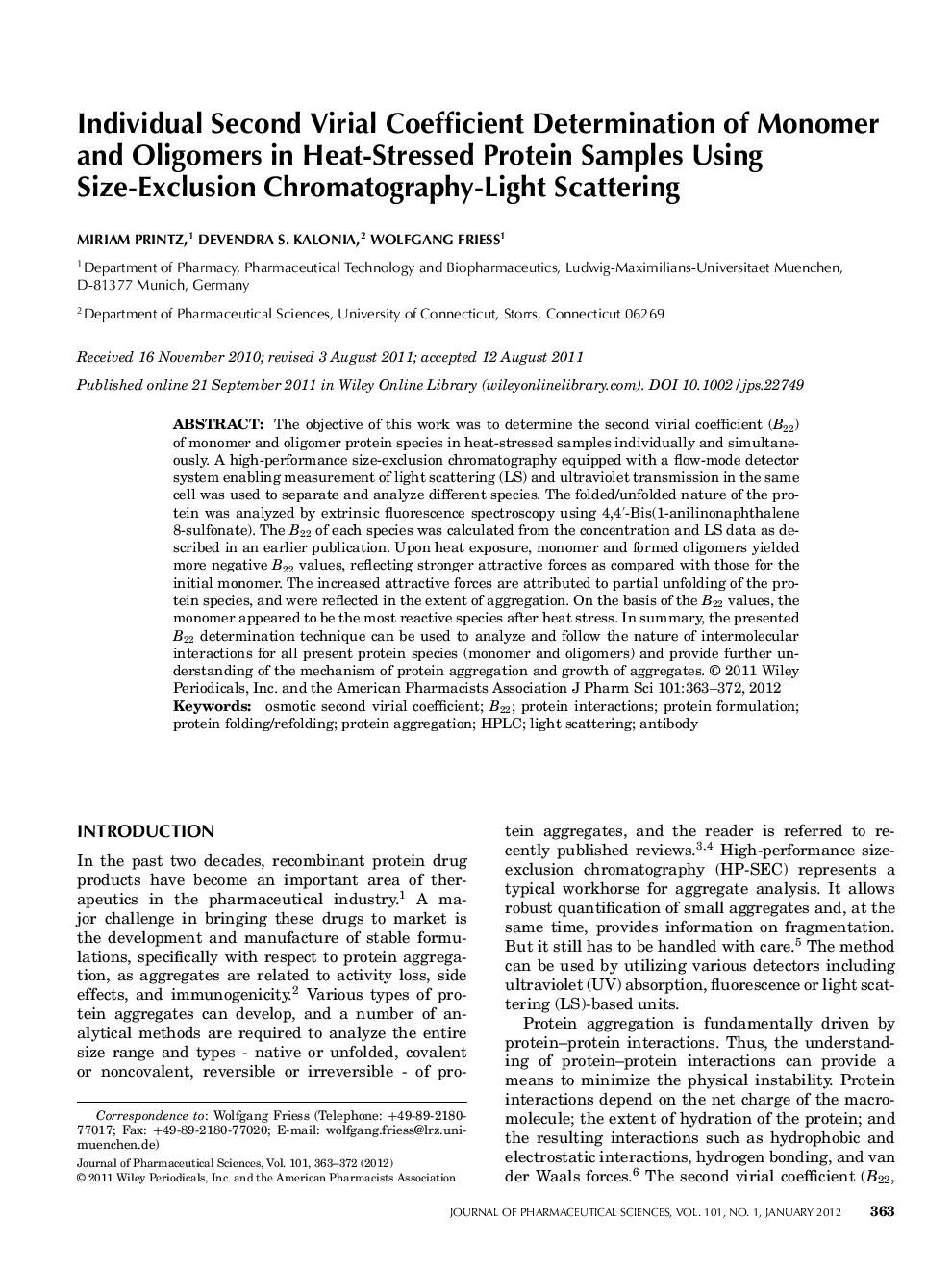| Article ID | Journal | Published Year | Pages | File Type |
|---|---|---|---|---|
| 2485421 | Journal of Pharmaceutical Sciences | 2012 | 10 Pages |
Abstract
The objective of this work was to determine the second virial coefficient (B22) of monomer and oligomer protein species in heat-stressed samples individually and simultaneously. A high-performance size-exclusion chromatography equipped with a flow-mode detector system enabling measurement of light scattering (LS) and ultraviolet transmission in the same cell was used to separate and analyze different species. The folded/unfolded nature of the protein was analyzed by extrinsic fluorescence spectroscopy using 4,4â²-Bis(1-anilinonaphthalene 8-sulfonate). The B22 of each species was calculated from the concentration and LS data as described in an earlier publication. Upon heat exposure, monomer and formed oligomers yielded more negative B22 values, reflecting stronger attractive forces as compared with those for the initial monomer. The increased attractive forces are attributed to partial unfolding of the protein species, and were reflected in the extent of aggregation. On the basis of the B22 values, the monomer appeared to be the most reactive species after heat stress. In summary, the presented B22 determination technique can be used to analyze and follow the nature of intermolecular interactions for all present protein species (monomer and oligomers) and provide further understanding of the mechanism of protein aggregation and growth of aggregates. © 2011 Wiley-Liss, Inc. © 2011 Wiley Periodicals, Inc. and the American Pharmacists Association.
Keywords
Related Topics
Health Sciences
Pharmacology, Toxicology and Pharmaceutical Science
Drug Discovery
Authors
Miriam Printz, Devendra S. Kalonia, Wolfgang Friess,
